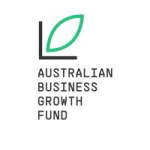
Source: Adobe Stock.
Armed with a growing business and a great opportunity, a business owner’s next challenge is to find capital. For many, while debt funding is an excellent option, there are circumstances when it isn’t the right answer — for them or for their banks.
So what can business owners do if they, or their banks, say no?
Enter equity and equity-like capital. It wears many different hats and can look different for every business. It may take the form of ordinary equity, preferred equity, or a convertible note, among other instruments. It can also open doors to new connections and capabilities within a business.
How can business owners ensure that an equity investment works best for them?
Making market conditions work for your business
A business’s approach to equity funding is intertwined with the markets in which they operate. Businesses in well performing industries, or that are disrupting an industry that’s otherwise stagnating, have an opportunity to use equity funding to their advantage.
Currently, businesses in niche technology industries such as artificial intelligence and cyber security are highly valued. Businesses operating in, or supplying to healthcare, manufacturing and defence are also well regarded and will have support from the government’s National Reconstruction Fund. And despite the cost of living pressures on consumers, tourism, travel and beauty products are still popular.
For example, the Australian Business Growth Fund (ABGF) investee company, aviation and tourism business HMC Group, launched a new airline to meet travel demands across regional Western Australia.
Uncertain economic environments open new doors for strong businesses to win new work, acquire a competitor or increase market share. Some successful businesses buck market trends in slower performing industries by offering something unique, such as online home furnishings company, DIY Blinds, which provides custom-made blinds without bricks-and-mortar retail stores.
Equity’s different forms
There are many ways to receive equity funding, depending on a business owners’ circumstances and preferences.
Ordinary equity is the most common, where the investor and existing shareholders own the same class of shares, and the investor and business founders share the same fate.
Funding could be provided in the form of preferred equity. Preferred equity can take many forms, for example, where the investor accepts some protection against potentially lower equity value (through a priority return), in exchange for potentially lower gains if the business flourishes. This may give an investor greater comfort and could allow the founder to retain a greater proportion of ownership.
Another option is a convertible note, a hybrid form of debt and equity. This offers businesses the benefits of debt funding, without the same pressure to make both principle and interest repayments, with interest payments typically accrued. This allows the cash flow that would normally be diverted to debt payments to be used for a business’s immediate growth needs. It also gives the founders the flexibility to repay the debt in the future.
Gaining a partner
Several business owners pursue equity funding when they want to diversify their business’s ownership. However, others may feel uncomfortable about giving up some of their business. Either way, business owners don’t have to compromise on their control.
Equity funding arrangements vary. Some investors, like ABGF, only take a minority share in the business, so business owners remain in control. And there are advantages to having an investor with ‘skin in the game’ – especially when the investor can also provide additional capability and connections.
For example, Derwent Industries recently leveraged ABGF’s transaction execution support to help it acquire Mackay Rubber – expanding its ability to provide additional Australian-made industrial products to critical sectors.
Choose the path that’s best for your business
There is no single approach to equity funding. Each business owner needs to identify what is best for their current business needs. Capital raising is a financial and psychological journey for business owners, and they need to be clear on what they want to achieve from their raise and their long-term vision for their business.
ABGF engages in proprietary trading for its own account, does not hold an Australian financial services license and does not provide financial product or investment advice, or any other financial services, to investee entities. Anyone who makes a decision to engage in a transaction with ABGF will be required to acknowledge and agree that it will make its own independent decision to enter into each transaction and each transaction is appropriate based on its own judgement and advice from such advisors that it deems necessary.

ABGF is Australia’s only purpose-built growth capital fund dedicated to the SME sector. We have over $500 million of capital to deploy, with initial investments of $5 million to $15 million in each business. ABGF brings together capital, capability, and connections, while only taking a minority stake in the business. Our unique public private partnership model, facilitated by a powerful alliance between the Federal Government and six leading banks, bridges a critical gap in the market.


COMMENTS
Reader comments have been turned off on this post.